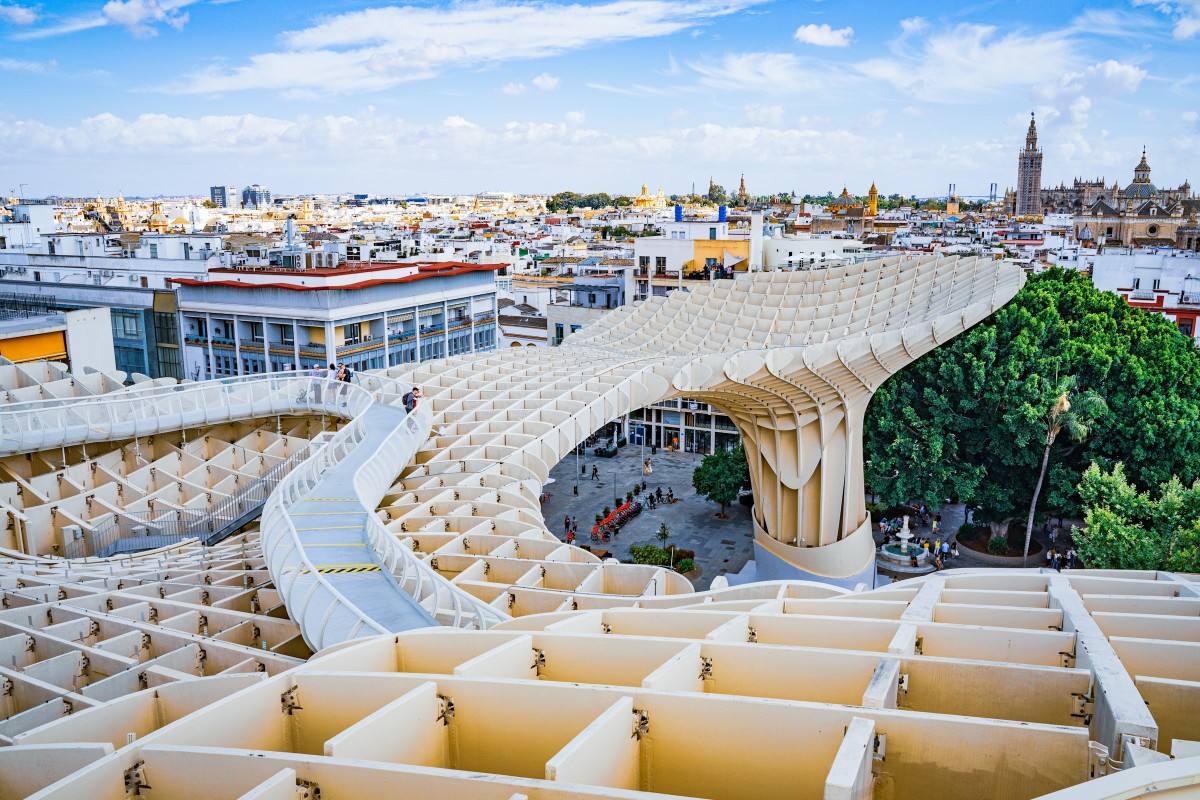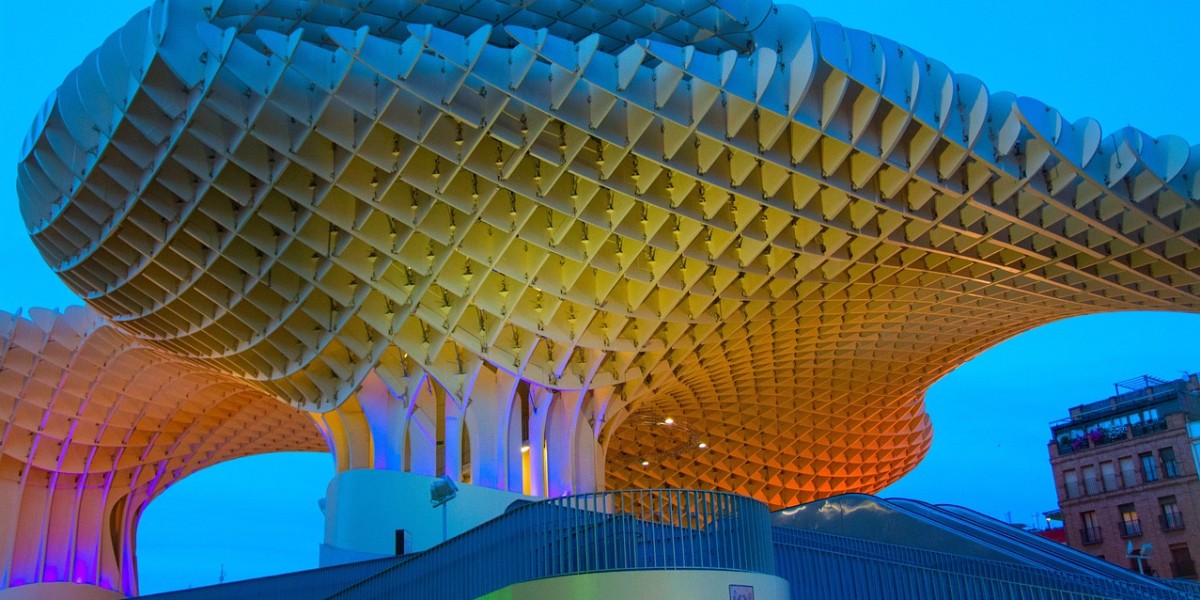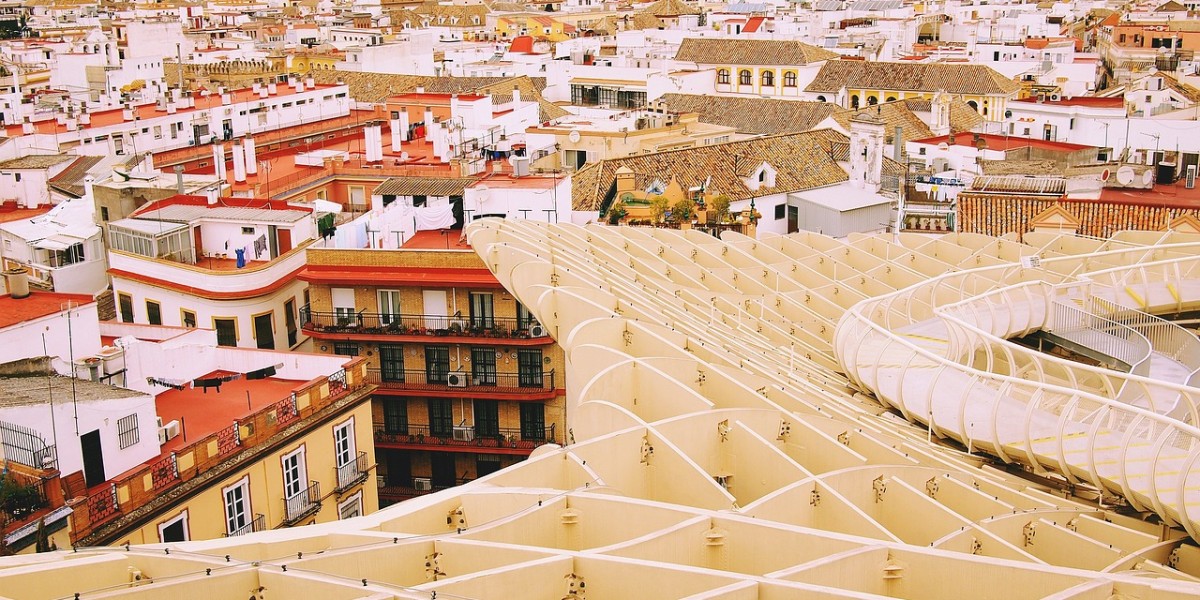
In the heart of Seville, the central Plaza de la Encarnación is home to one of Spain's most distinctive modern structures: the Setas de Sevilla - which translates as "Seville's mushrooms". Known also as the Metropol Parasol, this complex has become a symbol of innovation and contemporary culture in a city steeped in history.
Since its inauguration, the Setas de Sevilla has transformed Seville’s urban landscape, redefining the role of public space with its multifunctional design. Discover everything there is to know about this remarkable landmark.
History of the Setas de Sevilla
The story of the Setas de Sevilla began in 2004 when an international competition was launched to revitalise the old Plaza de la Encarnación. The goal was to rejuvenate this historic area and provide Seville with a dynamic space for cultural and commercial activities.
The winning project, submitted by architect Jürgen Mayer, was selected for its innovative vision and sensitivity to the urban setting. Construction commenced in 2005 but encountered numerous technical and financial challenges, ultimately delaying its completion until March 2011.
The design of the Setas draws inspiration from the vaults of the Cathedral of Seville and the ficus trees in the nearby Plaza del Cristo de Burgos, establishing a visual connection with the city’s historic surroundings. The structure consists of six parasols shaped like giant mushrooms – hence its popular nickname – and is primarily constructed from wood, coated with polyurethane for added durability.
Since its opening, the Setas de Sevilla has hosted a wide range of cultural and social events, from craft markets to concerts and festivals. This innovative space has revitalised the local economy by attracting tourists and creating new business opportunities.

Setas de Sevilla opening hours, tickets and prices
You can visit the Setas de Sevilla from the outside at any time for free, as they are located in the Plaza de la Encarnación. However, entry to the interior requires a ticket. The opening hours are from 9:30 a.m. to 12:30 a.m. daily, with the structure illuminated each evening.
Tickets include access to a multi-sensory projection, a 360-degree viewpoint over the city, and a light show, among other features. General admission is €15, while reduced admission (for students, people with disabilities, retirees, etc.) is €12. Family packages with discounted rates are also available.
For free entry, Seville residents and children under five can enjoy the Setas de Sevilla without charge every day of the year.
How to get to the Setas de Sevilla
Getting to the Setas de Sevilla is easy thanks to its central location in the Plaza de la Encarnación. This landmark is well connected by various means of transport.
- Bus: Several city bus lines have stops near the Setas, including lines 27, 32 and B4.
- Metro: The nearest metro station to the Setas de Sevilla is Puerta de Jerez. From there, you can either take a short walk or catch a direct bus to reach Las Setas easily.
- Bicycle: Seville has an excellent public bicycle system and there are several stations near the Setas.
- On foot: If you are in the historic centre, it is best to walk to the Setas. Plaza de la Encarnación is within walking distance of other landmarks.
- Car: If you prefer to drive, there are several public car parks nearby, although you should be aware that traffic can be heavy and spaces are limited.

Setas de Sevilla facts
The Setas de Sevilla is a remarkable work of art that leaves a lasting impression on all who visit. Beyond its striking architectural design, this iconic landmark is home to fascinating stories and intriguing facts that truly capture its essence.
- Guinness Record: The Setas de Sevilla is listed in the Guinness Book of Records as the largest wooden structure in the world.
- A sky-high viewing point: The panoramic viewing point offers unique views of the city and is one of the few places in Seville offering 360-degree views.
- Culture and leisure: Beneath the Setas is the Antiquarium, where you can see Roman and Arab archaeological remains, showing Seville's layers of history.
- Events centre: This venue also functions as a vital space for cultural events, craft markets and concerts.
Living in Seville
Seville offers an enviable quality of life, thanks to its sunny climate, rich history, and vibrant culture. The city seamlessly blends the charm of the ancient with the comforts of the modern, making it an ideal place for contemporary living. Living in Seville is about immersing yourself in its cultural legacy, enjoying everything from its renowned tapas to its traditional festivals, such as the April Fair and Holy Week.
Another standout feature of Seville is its warm and welcoming community. Sevillians are famous for their hospitality and cheerfulness, which makes it easy to integrate, whether you're from another part of Spain or abroad. Additionally, the city has a wide range of services, including excellent education, top-notch healthcare, and efficient infrastructure.
